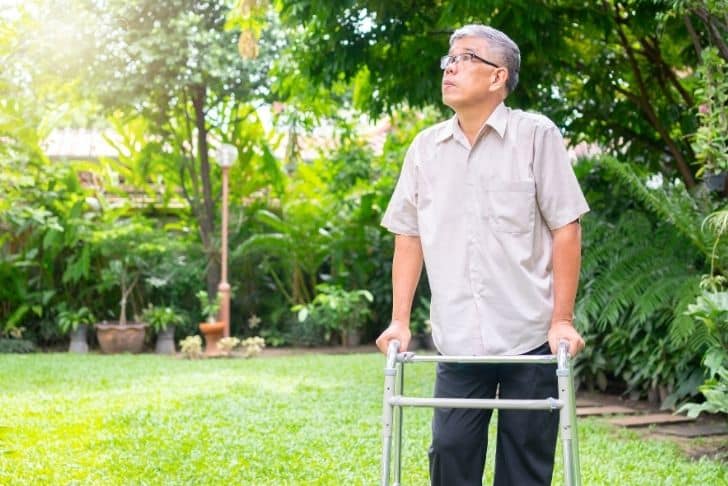Comfort, freedom, and confidence in movement are vital to aging gracefully. In the article “Boosting Independence for Seniors: Canes, Walkers, and Scooters,” you’ll discover the array of mobility aids designed to support seniors in delicate balance between safety and independence. Learn about canes to support a quarter of your body weight, or consider robust alternatives like walkers or rollators that can shoulder up to half. Perhaps a mobility scooter, which offers solace to the elderly walking long distances, suits your requirements better.
Similarly, explore wheelchairs for a more comprehensive support system, or acquaint yourself with home mobility devices like grab bars, stairlifts, and more. The article sheds light on the significance of a rightly chosen mobility aid, its proper usage, and the role it plays in enhancing the lives of seniors by boosting their self-reliance and community involvement. Get guidance on making informed decisions with medical consultation and wisely experience varied models at showrooms like Mobility Plus Colorado before finalizing your purchase.
Understanding the Need for Mobility Devices
As you age, your physical abilities might change, making it difficult to move around as freely or effortlessly as before. In such cases, mobility devices can be essential tools, assisting you in maintaining your independence and making routine tasks easier.
Explaining the concept of mobility devices
Mobility devices are pieces of equipment that help you move around more efficiently when facing physical challenges. These tools are designed to enhance personal autonomy and provide physical support to allow you to proceed with everyday activities such as walking, climbing stairs, or standing.
Importance of mobility aids for seniors
For seniors, mobility aids can be a valuable part of maintaining an active lifestyle. Not only do these devices allow you to continue participating in activities you enjoy, but they also enhance your overall health through continued movement and circulation. Besides, these devices often provide the added aspect of safety, reducing the risk of falls or injuries.
Different Types of Mobility Devices
There is a wide variety of mobility devices available, offering varying levels of support based on your specific needs.
Canes and their functionalities
Canes are one such mobility aid, capable of supporting up to 25% of your body weight. These come in numerous sizes, styles, and shapes—allowing you to choose one that best suits your style and needs. A cane can offer balance and support while walking, climbing stairs, or standing.
Walker and Rollator devices
When you need more support than a cane can provide, you might want to consider a walker or rollator. These devices can help support up to 50% of your body weight, enabling safer mobility by providing all-around stability.
Mobility scooters for long distances
If walking tires you out quickly or you find yourself needing to cover long distances, a mobility scooter can be a great choice. From compact, portable models to all-terrain options, there is a wide range to choose from based on your specific lifestyle and environment.
Manual, transport and power wheelchairs
When you need significant mobility assistance, wheelchairs come into the picture. Whether you need a manual or transport wheelchair for occasional use or a power wheelchair for constant use, there is surely an option to fit your needs.

Home Mobility Devices
Enhancing mobility isn’t limited to getting around outside the home. Home mobility devices provide extra support, allowing you to navigate your own surroundings comfortably and securely.
Grab bars for home support
Simple in design but significant in function, grab bars can be installed around the home wherever additional support is needed. They’re particularly useful in bathrooms and near beds, helping you retain stability and balance during movement.
Role of Stairlifts in enhancing mobility
Stairlifts provide a secure and comfortable way for you to navigate staircases at home. They can be custom-designed to fit your staircase, enabling you to access different levels of your home independently.
Vertical platform lifts
Vertical platform lifts go a step further than stairlifts by offering a platform that can lift you, whilst seated in a wheelchair, directly to different levels. These are more of interest if you’re primarily using a wheelchair for mobility.
Wheelchair ramps and their benefits
Wheelchair ramps make overcoming thresholds and steps hassle-free. You can install them on entrances to your house or on outdoor stairs to improve accessibility and make moving around your home more efficient.
Selecting the Right Mobility Device
choosing an ideal mobility aid depends on your current physical condition, lifestyle, and surroundings.
Determining correct fit
The effectiveness of a mobility aid largely depends on how well it fits you. Thus, it’s important to consider your height, weight, and strength while choosing a device.
Encouraging activity with mobility aids
A mobility aid should work to promote activity rather than limit it. Select devices that motivate you to be more physically engaged, thereby enhancing overall health and wellbeing.
Usage of the device
Considering ease of use is very crucial. Mobility aids will become an integral part of your daily routine, so it’s advised to choose devices that you are comfortable operating regularly.
Considering changing needs of the senior
Always remember that your needs might change over time. Hence, flexibility is key, and the device should be able to adapt to your changing needs.

Improving Quality of Life with Mobility Aids
The main goal of mobility aids is to improve your quality of life, ensuring that you lead a more active, safe and self-dependent lifestyle.
Boosting confidence through mobility devices
freedom of mobility instills confidence—an essential element for your mental wellbeing. Mobility aids assure you to move freely, which can significantly boost personal confidence and self-esteem.
Encouraging safety with the right device
Safety is always paramount. using mobility aids can significantly lower the risk of falls and related injuries, allowing you mobility in a secure manner.
Increasing independence for seniors
Mobility devices provide you with a degree of independence to carry out daily activities without constantly relying on others for help.
Promoting community involvement
By enhancing your ability to move around, mobility aids encourage more outings, community activities, and social involvements that could otherwise be challenging.
Consultation before Purchasing Mobility Devices
Before investing in a mobility aid, take the time to consult with others to ensure you’re making an informed decision.
Discussing options with medical professionals
Medical professionals could guide you through the various options available based on your specific health and mobility needs, ensuring that you choose the most suitable aid.
Involving family in decision-making
Involving your family in the decision-making process can be beneficial. They can provide emotional support and can often share valuable insights that might aid in taking the right decision.
Trying out different models in showrooms
Visit showrooms or retail stores that allow you to try out different models. This is a great way to understand which device feels the most comfortable and suits your lifestyle before purchasing.

Platforms for Mobility Device Purchase
The right platform can make a big difference in your purchasing experience.
Introduction to Mobility Plus Colorado
Mobility Plus Colorado is a platform that provides a variety of mobility aids. From wheelchairs and mobility scooters to stairlifts and rollators, this platform is a one-stop-shop for all your mobility needs.
Benefits of shopping on a platform like Mobility Plus Colorado
Platforms such as Mobility Plus Colorado offer a personalized shopping experience. They provide opportunities for trying out different models and also deliver guidance and advice on choosing the right mobility device.
Adjusting to Life with Mobility Devices
Getting used to moving around with a mobility device takes time and practice.
Learning to use mobility aids
It’s normal to take time to adjust to your new mobility device. Remember, it’s okay to take it slow and gradually build up confidence in using your device.
Balancing independence with safety
While striving for more independence, it’s equally important to ensure safety. Always make sure to use the device appropriately and seek assistance when necessary.
Overcoming stigma associated with using mobility aids
It’s important to remember that using mobility aids is not a sign of weakness, but an indication of self-care and willingness to stay active and independent. Surrounding yourself with a supportive community can help overcome any stigma associated with using mobility aids.
Caring for Mobility Devices
Just like any other piece of equipment, proper maintenance prolongs the lifespan and effectiveness of your mobility aid.
Maintenance of mobility aids
Regular cleaning, timely lubrication of moving parts, and careful handling can go a long way in maintaining the life of your mobility aid.
Understanding warranty and repair policies
Make sure to understand the warranty and repair policies of your device. Knowing when and how to seek professional help for repairs can be beneficial.
Replacing outdated or worn-out devices
Timely replacement of worn-out or outdated devices ensures that you always have a reliable support system. Be open to updating your aid when it can no longer serve your needs effectively.
Financial Aspects of Mobility Devices
The financial aspects play an important role in purchasing decisions and therefore need careful consideration.
Understanding the cost of mobility aids
The cost of mobility aids varies significantly based on the type, model, and brand. Hence, it’s crucial to understand these differences and choose an option that aligns with your budget.
Exploring insurance coverage and financial assistance options
Some insurance providers cover the cost of mobility aids under certain conditions. It’s advisable to explore such options. Additionally, various government and non-government financial aid programs can assist in easing the financial burden. These options can provide substantial help in acquiring the essential mobility aid you need.
